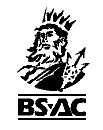 Go to Dive Club 854 home page.
Go to Dive Club 854 home page.


My interest in H.M.S Thanet started around 6 months ago when I came across an article in a travel book concerning her loss near the Aceh group of Islands off the east coast of West Malaysia. Following some further research, the following has come to light.
We are all aware of the great loss suffered on the 10th December 1941, when the British Navy's capital ships H.M.S Repulse and H.M.S Prince of Wales were both lost following air attack by Japanese aircraft. Few people will be aware however that the whole sad tale was repeated a few weeks later when H.M.S Thanet, and H.M.A.S Vampire made an attempt, to attack a large force of Japanese troops making a landing at Endau.
H.M.S Thanet was a long way from her designed hunting grounds. Built in 1919 by Hawthorn in the UK, she was one of the numerous "S" Class destroyers destined for service in the North Sea and English Channel. Her particulars were as follows :-
| Displacement | 1,075 tons |
| Length | 276 ft |
| Breadth | 26 ft |
| Draught | 10 ft |
| Armament | 3 x 4-inch guns 1 x 2pdr 4 x 21-inch Torpedo Tubes 2 x 14-inch Torpedo Tubes |
| Max Speed | 36 knots |
On the night of January 26th 1942, H.M.S Thanet was dispatched from Singapore along with the ageing Australian Destroyer H.M.A.S Vampire. Their mission was to head up the East coast of Malaya to attack a Japanese force consisting of two transports, a cruiser and 4 escorting destroyers.
Initially contact was not made, however in the early hours of the 27th January, the two vessels engaged a force of 3 modern Japanese Destroyers. Thanet came under heavy fire, and was sunk following hits to her engine room. H.M.A.S Vampire, after trying to cover the Thanet with smoke, was forced to withdraw from the area.
One can only imagine the horror that the vessel and her crew went through on that January night. Its important to realise that the wreck marks the graves of a number of sailors who were not amongst the 57 or so survivors, and as such is to be treated as a war grave.
Following some investigation, two possible positions for the wreck came to light. One is marked on the Admiralty Charts for the area, off P. Kaban, whilst the second position was between the Aceh group of Islands, and Endau. On returning from the Jubilee Shoals weekend trip, it was decided to dive the site marked on the chart in an attempt to identify the wreck, or in any case discount it.
Kitting up ready for a wreck dive always provides me with a certain buzz. Wrecks tend to bring on a mood of excitement and sadness. The sight of a wreck on the seabed reminds me of a once proud vessel, and of how she came to go down. What were the circumstances of her loss ?, and having been in the Navy myself, what was the outcome for her crew ?. The excitement comes from the opportunity to see a piece of history.
Our brief for the dive was to descend the anchor line to the wreck, which was clearly visible on the echo sounder. Conditions on the bottom, at 20 meters, were not expected to be good due to the large amount of suspended matter in the water. Our group dropped down into the stream of sediment all looking out for the first signs of wreckage. Further proof that we were over a wreck presented itself in the form of large schools of Fusilier's hanging at around 15 meters.
The first sight of the wreck came soon after. Our anchor line had fallen across the boiler room, and clearly visible were the boilers and condensers of a powerful steam vessel. Turning on a heading of 270 degrees we swam above the hull and soon came to the clue as to the wrecks identity. Standing proud before us was a single barrel 4-inch deck gun, one of 3 that made up the Thanet's main armament. A large Grouper had made his home under the deck gun, and came out to meet us as we swam up to take a closer look. At this stage we noticed the hundreds of eyes watching from the curtain of Barracuda circling around at the edge of our vision.
Forward of the 4-inch deck gun, the vessel had split in two. We failed to find the bow section on our dive, however others from the group did report seeing the bow and forward 4-inch gun intact. Our group returned back over the wreck towards the stern, finding the searchlight platform and aft 4-inch gun leaning over at a drunken angle.
All to soon our planned 21 minutes of bottom time were up, we ascended via the anchor line, spending 3 minutes deco at 6 meters.
It was commented that my smile reached from ear to ear upon surfacing, and that's about how I felt. It was great to see the evidence on the seabed of the final resting place of the vessel I had been researching for the last 6 months. She may not be as exciting a dive as some of the large deeper wrecks in the area, however H.M.S Thanet made an excellent dive, and a fascinating step back into the darker years of the Second World War.